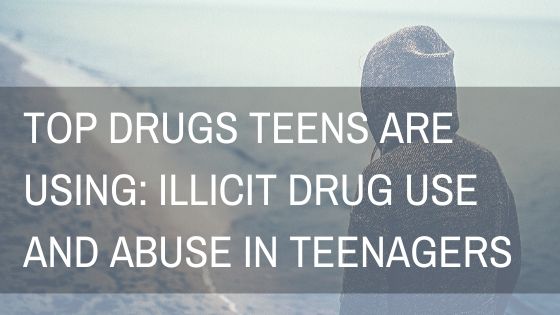The abuse of illegal drugs and misuse of prescription medications has become a risky practice by many teens. Although most teenagers have reported engaging in drug misuse occasionally, a few do it regularly.
A study shows that by the 12th grade, more than 50% of teenagers have abused one drug or the other at least once.
Marijuana is the most common drug used by teens. But teenagers can pick up a lot of dangerous substances in the home, such as glues, aerosols, and even prescription medications.
Getting addicted to substance may seem mild, but stopping it can be very difficult. It takes strong positive will, parental involvement and intervention from school, guidance from family members, and even religious organizations to help an adolescent who’s addicted to either alcohol, marijuana, Heroin, and so on.
More importantly, discipline needs to be enforced in addicted teens and access to illegal substances must be reduced.
Why Do Teenagers Take Drugs?
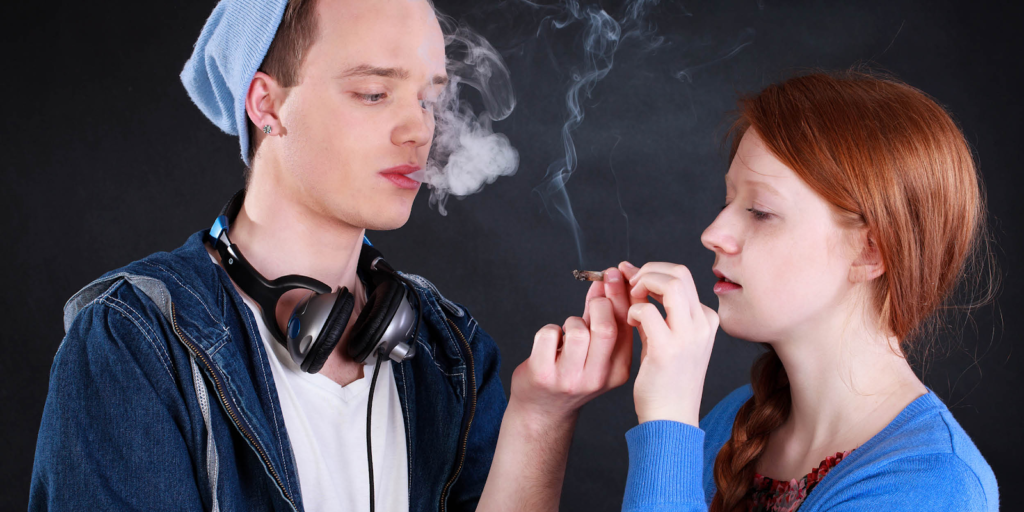
When we say ‘drugs,’ we’re referring to harmful or illegal drugs that are being abused by teenagers.
Most adults take drugs to feel better. In the same way, teenagers experiment with illegal drugs or keep taking them for a long time for reasons best known to them.
But that’s not helpful to you.
In summary, here are the reasons why adolescents take drugs:
1). To Feel Good:
You must have seen teenagers experimenting with drugs and wonder why they’re so passionate about it? Well, there’s an interaction between the neurochemistry of the brain and drug overdose.
This tends to produce a feeling of ‘goodness’ or ‘pleasure.’
In the teen’s mind, he or she wants to feel good due to peer pressure — or to appear noteworthy among friends and peers. The level of goodness experienced depends on the type of drug used and how it was administered.
2). To blend in:
Peer pressure happens to a lot of teenagers — and when they can no longer curtail it, they give in to drug misuse in a bid to fit in.
Since others are doing it—or they think others are doing it, the fear of not being acknowledged or accepted in a social circle that comprises of peers who abuse all types of substance forces them to get involved.
3). To experiment with new things:
Adolescents are teenagers are often inspired and rewarded when they pursue new experiences; experiences that will make them stand out and make an impact.
Lack of understanding of this call has led a lot of teenagers to experiment with drugs because it can lead to the exploration of hidden parts of the brain. So experimentation is one of the reasons teens are addicted to all manner of drugs today.
Some teens would even dare their teenage friends to try a different type of drug. From consuming so much alcohol, experimenting with new drugs can lead teens to marijuana, and other harmful substances.
4). To feel better:
There’s another level of euphoria beyond feeling good, it’s feeling better. This happens when teenagers who suffer from social anxiety and even physical pain may attempt to lessen the pain or distress.
Studies have shown that stress plays a significant role in driving teenagers toward drug misuse.
Stress can also lead to relapse (a situation whereby someone starts taking drugs again after recovering from addiction).
5). To do better:
Some teenagers and adolescents who believe they can outperform their peers if they start using drugs. But they’re wrong!
Illicit drug use has been proven to be the primary cause of underperformance in teenagers. But how many teens are aware of this fact?
We live in a competitive society where everyone is striving to be the best. From athletics to academic performance to casual games that friends play — some teenagers may resort to drugs such as prescription stimulants because they have heard from another friend or read online that those substances can improve their performance.
At the end of the day, no amount of drugs can replace diligence, studious, and determined teenager from performing well in life.
Common Drugs Teens are Using (or Abusing)
In this section, we’ll certain drugs that teens are experimenting with. Indeed, some teens don’t take these drugs as yet, but sooner or later, they might get caught up in it due to peer pressure.
But you can help them to be drug-free by knowing what drugs to keep away from them or limit their access to it. Let’s dive in.
1. Alcohol
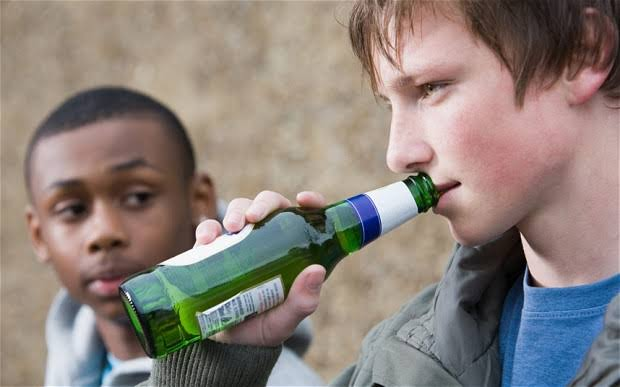
Alcohol is the easiest substance that teens abuse because it’s readily available everywhere. Taking alcohol isn’t necessarily a bad thing but abusing it to the extent where it begins to intoxicate is the misuse thereof.
That’s why alcohol affects people differently; even among teenage friends. Drinking alcohol too often and in large quantities, a teen exposes him or herself to injury and other forms of accident.
In a study conducted by Forbes and Statista, alcohol consumption is rising in the United States and India and falling in Australia, Canada, and the United Kingdom.
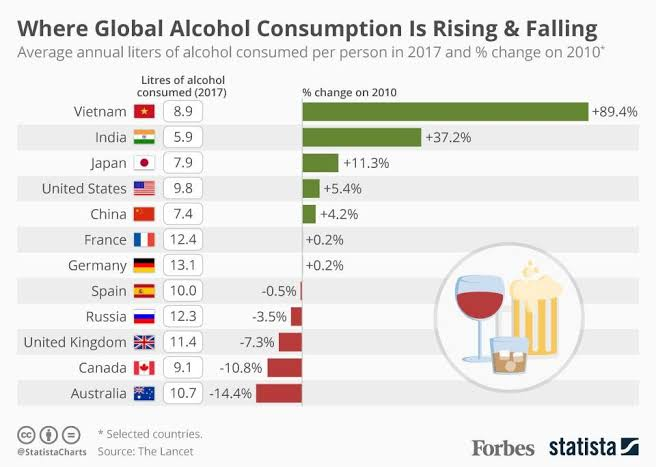
Note: This rise in alcohol consumption is mostly associated with teenagers and adolescents.
In extreme cases of alcohol consumption, teens can be diagnosed with liver and other health problems. In turn, alcohol disorder can be a byproduct of excess consumption.
Although there’s no standard rule to drinking alcohol. But adults are warned not to drink more than 5 drinks or bottles per day. Again, this depends on the size of the bottle and alcohol content.
For women, heavy drinking can be traced to more than 3 drinks per day or 7+ drinks every week. Abstinence is the best solution. But if teens can’t abstain from alcohol, at least 1 – 3 drinks per week wouldn’t lead to a disorder. Or so we guess?
What do we mean by 1 drink? Well, it could mean 8-9 ounces of malt drink, which contains more alcohol than beer, 5 ounces of sweet wine that may have more alcohol than you’d expect, 12 ounces of beer, distilled spirits such as Whiskey or Vodka.
So why do teenagers drink? There are so many reasons, but they drink to celebrate, socialize, experiment, and relax. Every other reason stems from these.
Throughout history, people have had questions about alcohol and why it causes people to feel and act in a certain way that’s obvious to everyone.
How much alcohol is too much? What causes some people to become addicted while others don’t even feel tipsy? We’re hoping that answers will come from The National Institute on Alcohol Abuse and Alcoholism.
To give you a sneak peek based on popular studies, here are the reasons why affects people differently:
- How often a person drinks
- How much they drink
- Family history
- Age
- Health status
2. Prescription and Over-the-Counter (OTC) Medicine
This may not be classified as illegal drugs since they’re prescribed by a doctor or physician, but they’re as harmful and addictive as illegal drugs.
Drugs like Opioids pain reliever and anxiety medicine are often abused by teens.
Among teens and adolescents, cough and cold medicine that contains dextromethorphan, are some of the commonly abused Over-The-Counter drugs. When taking in excess, it can intoxicate or make someone feel drunk and high.
3. Heroin
Heroin is an illegal drug. It’s never prescribed by doctors for any reason, but some teenagers still access it.
It comes in its natural form of manmade opioid narcotics, which can be harmful when taken in its raw form. See what a Heroin recovering addict had to say at the ABCNews.
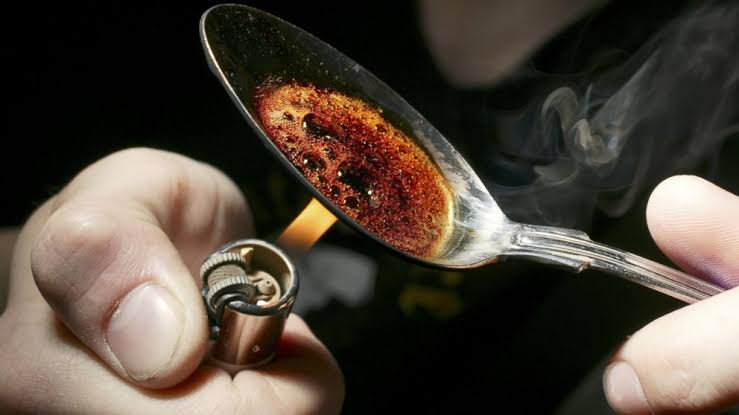
Most people have reported that when they take Heroin, it gives them a rush of euphoria (i.e., extreme good feeling) instantly. But eventually, it’ll wear off and everything slows down.
At that point, a person who used Heroin may move and think very slowly, experiencing nausea, chills, and nervousness. Consequently, this causes the person to feel a strong need like never before to take more heroin to achieve that initial feeling of goodness.
That’s when addiction sets in. And it’s fast becoming a norm with teenagers.
If you have or know a teen who’s acting weird and always reaching out for certain drugs, they may be addicted to Heroin, you just need to confirm and when you do, take steps to help them out.
4. Cocaine
You may be wondering why teenagers use Cocaine? Well, Cocaine is one of the substances that energizes the whole body. It’s highly addictive and stimulating.
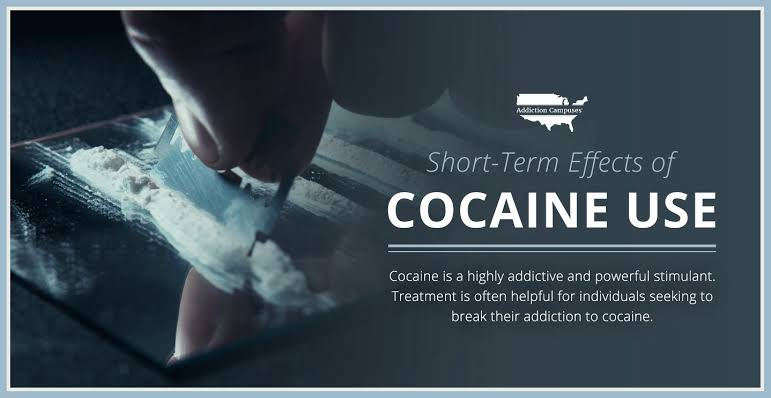
Teenagers who take it do so because they want to feel, act, talk, or move swiftly. They want to do things differently — oftentimes, with unimaginable speed.
At first, they may experience a feeling of happiness and energy. But within a few minutes or hours, that mood will likely shift to sadness or extreme anger.
Most teens have reported feeling downcast, depressed, or anxious — as if someone is out to capture them. So they feel like fighting back. In the process, they do things that make no sense.
The mood may then shift to anger. You may feel like someone is out to get you. It can cause you to do things that don’t make sense.
Using cocaine for a long time is dangerous. It can lead to addiction; specifically, it’d cause a person to have strong cravings for this drug and other drugs.
If such persons aren’t guided, this cravings and misuse of Cocaine can lead to health problems such as liver issues, depression, and even Cancer.
5. Marijuana
Here’s why Marijuana is one of the most used drugs by Teenagers: It’s being legalized by some states in the United States. The government is only legalizing it for medical uses only.
But who’s going to drill it into the minds of teenagers that medical use isn’t the same thing as personal abuse or misuse?
In some states, though, Marijuana isn’t legalized for medical uses. It’s illegal and anyone in possession of it, when caught, will be prosecuted. Sadly, Grade 9-12 students are using Marijuana as well. Take a look at this chart based on location and ethnicity.

If you’ve seen some Mafia movies where people laugh for no reason and feel silly, that’s a clear indication of Marijuana intake.
It also causes people to feel sleepy and easily forget what just happened to them or someone they know. Drinking while drunk is similar to driving while high on Marijuana — there’s no difference whatsoever!
Burnout and other related health issues are the results of heavy marijuana use.
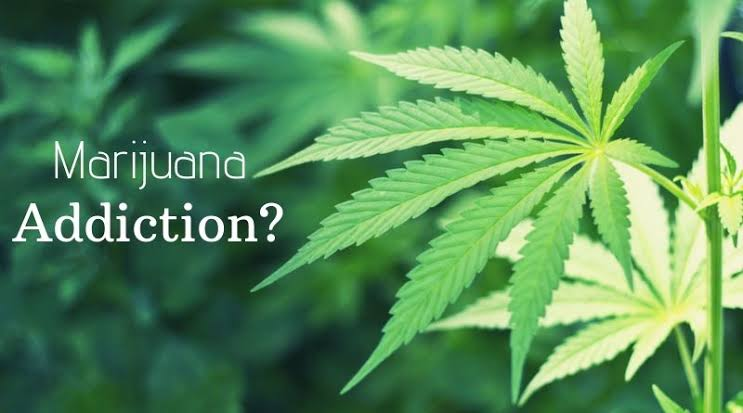
There have been scenarios when teens have become addicted to marijuana. Yes, Marijuana is addictive.
Several studies have shown that 9% of teens become addicted to Marijuana, and many of them are high-school seniors who have reported smoking marijuana daily.
Taking marijuana or being addicted to it leads to underperformance in school work. Long-term marijuana users have made attempts to quit but they had to battle with withdrawal symptoms such as anxiety, drug craving, irritability, lack of appetite, and sleeplessness.
These symptoms further drive the cravings up — making it difficult for the user to stay off the drug.
There are a few effective ways of treating Marijuana. For example, Cognitive-Behavioral Therapy and Contingency Management, as well as Behavioral interventions have proven to be effective in treating or eliminating every ounce of marijuana cravings.
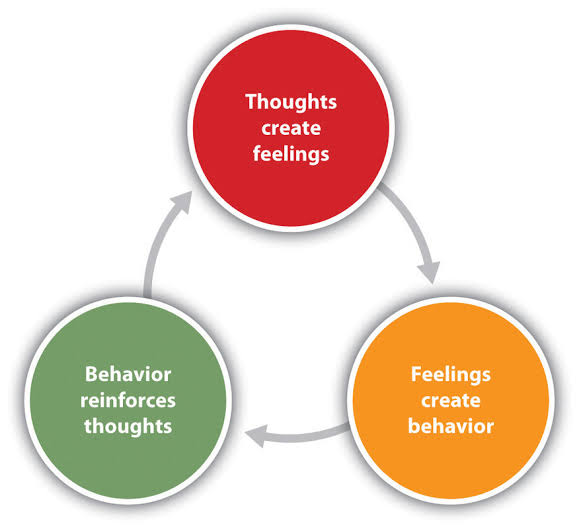
There are no medications to completely treat marijuana addiction, except to deal with the withdrawal symptoms, prevent relapse, and stop its intoxicating effects.
These are all parts of recent discoveries concerning the endocannabinoid system, which acts as a signaling system that connects the body and brain using certain chemicals that functions as the active ingredients in marijuana.
6. Cigarettes and Other Tobacco Products
Cigarettes and other Tobacco products are sold everywhere, which makes them appear legal and healthy. But they’re not.
Tobacco contains a chemical popularly known as nicotine that can deliver a little rush of goodness and energy. Just like most drugs, the effect can wear off quickly and causes the user to crave for more.
That’s what causes addiction. Teenagers who smoke cigarettes and other tobacco products may get addicted just like other drugs if they’re unable to control the craving and the feelings associated with it.
What’s the Difference Between Substance Abuse and Addiction?
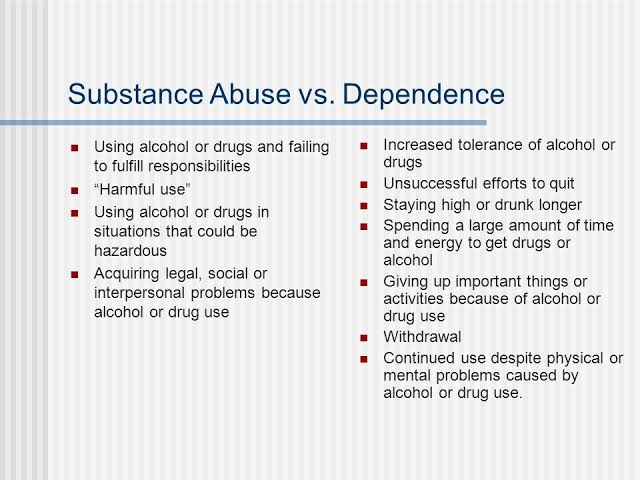
You may want some clarity on the difference between addiction and substance abuse. Well, the line is very thin. Substance abuse entails using an illegal substance or misusing a legal substance.
Addiction, on the other hand, will begin as abuse, but it grows and becomes a part of the person’s being. Most people abuse drugs but aren’t necessarily addicted to it.
For example, the fact that John smoked pot a few times in the past week doesn’t qualify that as an addiction, but he’s abusing a drug — which could lead to an addiction eventually.
People get addicted to substances you’ll never have imagined. It goes beyond alcohol or Cocaine, even glue, ashes, or OTC medicines can become a source of addiction to people — especially teens.
Although some substances intoxicate more than others. Drugs such as heroin and crack are among the most addictive drugs. Just using them once or a few times can cause the user to lose control. Yes, they’re that addictive!
Conclusion
There you have it, the top drugs that teens are experimenting with. When you observe that your teen or someone you know has no control when it comes to certain substances (even beer), that could be an addiction.
It all boils down to getting used to certain drugs that the person no longer has the discipline to say “No.” For example, someone who’s addicted to Marijuana has become so used to the drug and must do everything within and outside their means to have it.
Remember that addiction can be physical, psychological, or both. And there are effective treatments to use. If you want to help a teen, start by seeking a doctor’s advice first — before employing other treatment options.

